 |
 |
 |
| |
MICROELIMINATION BEYOND PRISON WALLS: SUBJECTS SERVING NON-CUSTODIAL SENTENCES, SCREENING AND IMMEDIATE ASSISTED TREATMENT WITH "NAVIGATOR" FIGURE AND TELEMEDICINE
|
| |
| |
AASLD 2020 Nov 11-16 virtual
Reported by Jules Levin
Joaquin Cabezas1,2, Susana Llerena1,2, Miguel Mateo3, Rocio Alvarez4, Maria Del Mar Fernandez4, Carmen Cobo5, Antonio Cuadrado1 and Javier Crespo Garcia6, (1)Research Institute Valdecilla (IDIVAL), (2)Hepatology Unit, Marques De Valdecilla University Hospital, (3)Medical Staff, Programas Del Centro De Insercion Social Jose Hierro, (4)Medical Staff, Centro De Insercion Social "Jose Hierro", (5)Medical Department, Centro Penitenciario Del Dueso, (6)Digestivo, Hospital Universitario Marques De Valdecilla
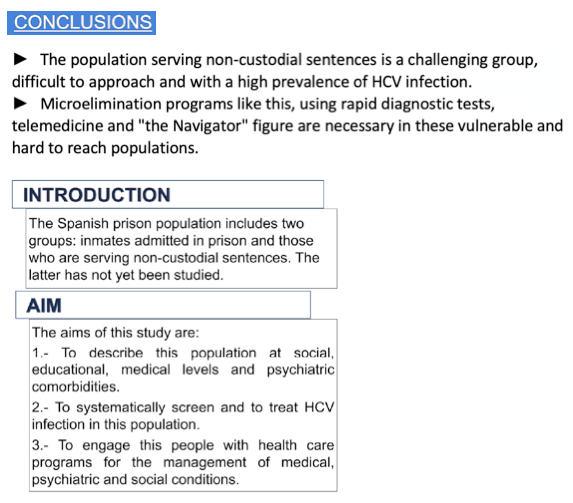
Background: The Spanish prison population includes two groups: inmates admitted in prison and those who are serving non-custodial sentences . The latter has not yet been studied . The aims of this study are: 1.- To describe this population at social, educational, medical levels and psychiatric comorbidities. 2.- To systematically screen and to treat HCV infection in this population . 3.- To engage this people with health care programs for the management of medical, psychiatric and social conditions.
Methods: Prospective observational study, including all subjects sentenced to non-custodial sentences attended at the Center for Social Insertion "Jose Hierro" (Santander) from June 2019 to June 2021, between 18 and 79 years and who gave signed informed consent. Assisted by the medical team and the center's "Navigator", systematic screening of HCV is performed by detection of antibodies by Oraquick®, those that are positive, viral load is determined by GeneXpert® in capillary blood . All cases with detectable viral load are evaluated by the hepatology staff by telemedicine and then antiviral treatment is prescribed. Thus, active HCV infection detection, disease evaluation and treatment are all done in the same day. The Navigator figure facilitates continuity for medical care and social assistance of these individuals (accompaniment to the hospital, adherence to treatment etc.)
Results: So far, 327 people have been invited to participate, 308 of them have been screened for HCV (94 .2% acceptance). The prevalence of anti-HCV + has been 7 .8% (24), which represents 5 times the general population. The prevalence of detectable viral load is 3.2% (10), above 10 times the prevalence of viremia in the community . All patients have initiated antiviral treatment either in the hepatology or infectious unit in case of HIV co-infected . Regarding comorbidities: problems related to substance abuse were detected in 148 (48%), suspected serious mental disorder in 25 (8 .1), previous stay in prison in 60 (19 .5%) . Currently, navigator is monitoring 54 (16 .5%) patients regarding HCV treatment and their comorbidities . All the patients have reached a sustained viral response except 4 who have lost follow-up and a transfer to another autonomous community.
Conclusion: The population serving non-custodial sentences is a challenging group, difficult to approach and with a high prevalence of HCV infection. Microelimination programs such as this, using rapid diagnostic tests, telemedicine and "the Navigator" figure are necessary in these vulnerable and hard to reach populations.
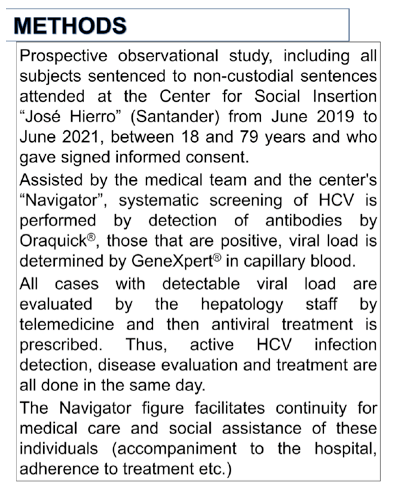
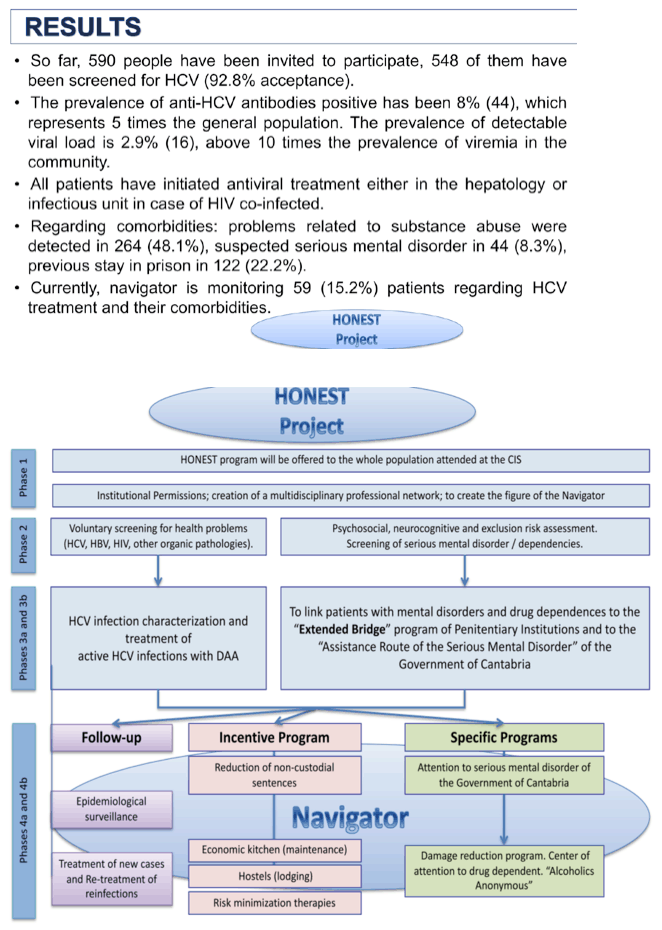
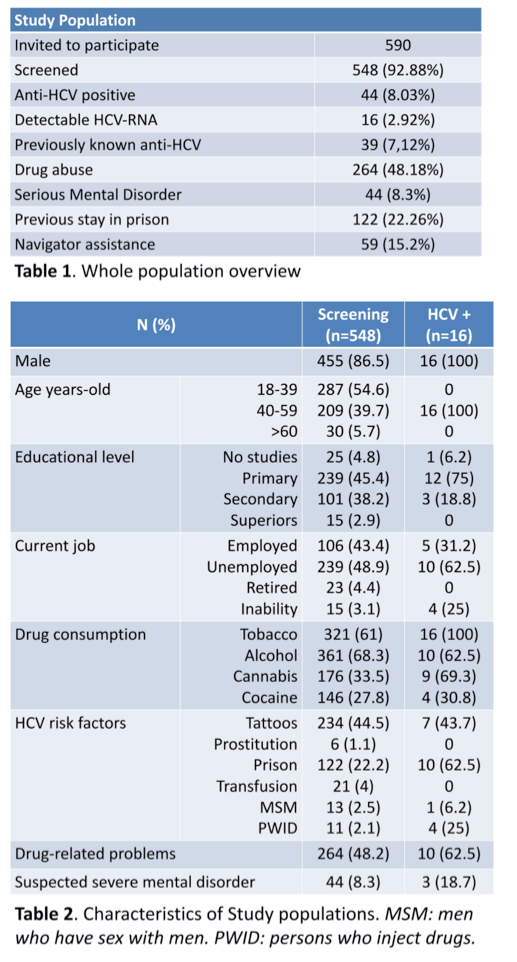
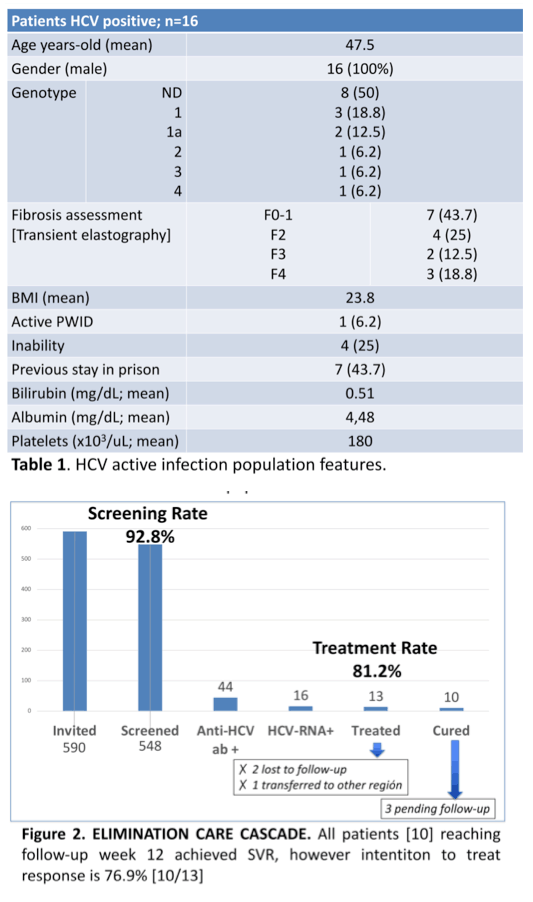

|
| |
|
 |
 |
|
|